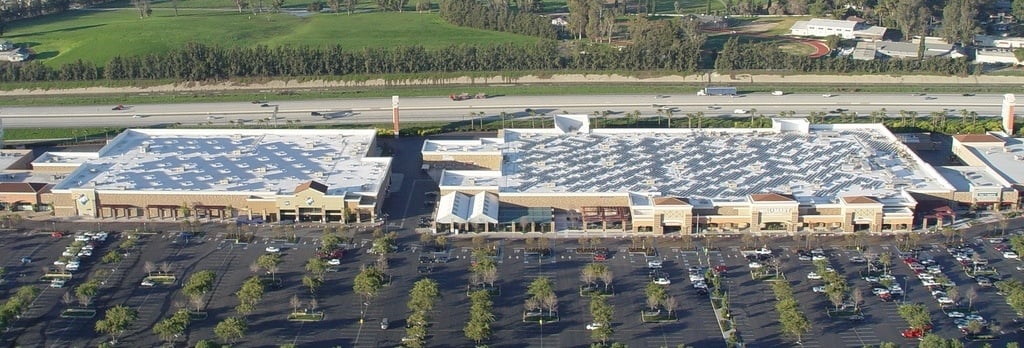
All this year we’ve been seeing major advances in the solar industry, and this week is no different. Across the U.S. and around the world, major companies are choosing renewables, with many installing solar to power facilities. Meanwhile, the price of solar continues to fall even faster than predicted, making solar energy one of the most sought-after sources of generation for large and small consumers alike. This week, we bring you more dispatches from the sunny world of solar energy, but there may be clouds on the horizon if the industry fails to integrate with other advanced energy technologies.
This year more commercial energy clients than ever are choosing advanced energy, and for many that means solar. Apple announced in May that its stateside facilities and also its entire manufacturing supply chain would be powered with renewable energy, primarily solar and wind with fuel cells, geothermal, and small hydropower plants included as well. And just this week, Google announced its biggest advanced energy investment yet, adding 842 MW of renewable energy capacity, including a wind farm in Sweden and solar power plant in Chile, to power data centers worldwide. This investment marks the biggest purchase of renewable energy by a non-utility ever. The company also recently announced a goal to go 100% renewable by 2025, which would require a tripling of its current advanced energy purchases.
A new survey of Fortune 100 businesses from the Solar Energy Industries Association found an increase of nearly 60% in solar installed by corporate owners since 2014. The annual Solar Means Business survey names AEE member Apple as a top leader in the field in megawatt capacity (ranking 4th), surprising no one. Other leading businesses include Walmart (the run-away leadser with 142 MW), Prologis, Target, Costco, Kohl’s, IKEA (which owns all its solar facilities), and Macy’s. Other big solar users based on number of locations are Walgreens, Staples, Safeway, General Motors, and REI.
The report also tracks the cost of solar installations, which has continued its downward trend. In the U.S., the “turnkey installed cost ($/Wdc)” of residential rooftop solar has fallen from more than $6 in 2010 to just over $3.50 in 2015. The trend holds up worldwide as well. This week, Renew Economy reported that, in India and Chile, solar is now cheaper than new coal generation facilities. An American solar company recently won a contract for 500MW of solar capacity in an auction, quoting a record low price for India of INR 4.63/kWh (just over $0.07 U.S.). Solar is still cheaper in some places in the U.S.: Austin Energy got 1.2 GW of solar bids for less than $0.04/kWh earlier this year.
Two articles out this week demonstrate just how cheap solar has gotten worldwide. First, from the online magazine Minds, “70% of Mongolian nomads now have solar power.” It turns out portable home solar systems are perfect for people who move entire communities from place to place. Also this week, Bloomberg published a story highlighting M-Kopa, a Kenya-based solar company, which has a financing model that works for people who live on less than $2 a day. Customers pay $35 initially and agree to make a daily payment of 45 cents for a year, at which point the system, which includes two LED lights, a radio, and a mobile phone charger, is theirs.
The market for solar is huge, with room for customers from Wal-Mart to Susan Atieno, a Kenyan woman lighting her home with solar power. But, as an article from MIT Technology Review cautions this week, without incorporating energy storage, solar power could hit a ceiling. The article tells a familiar story: the sunniest hours do not correspond with the hours with highest demand. The article cites a study on California’s grid that concluded, “if solar power were to reach 50 percent of the grid, it would only be a quarter as valuable as it was before any solar had been added.” The fix? Energy storage. Using the hours of low demand and high generation to charge batteries that can later be discharged during hours of high demand and low generation makes solar-generated electricity just as valuable in the dark of night as in the light of day. Advanced energy: building the nodes and connections to ensure the value of the future of energy.
